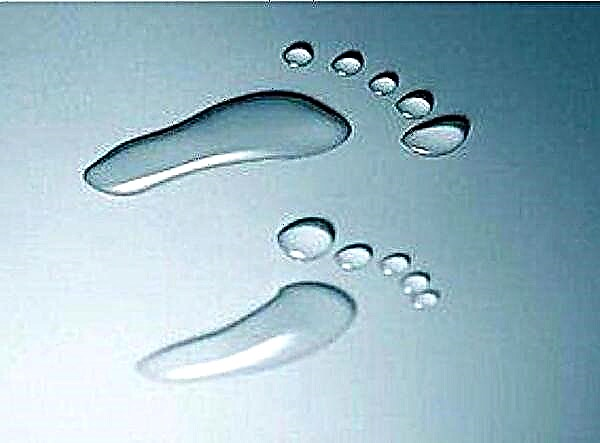
Pantogam is a medication, the reception of which has a positive effect on the functioning of the brain, memory and mental activity. It is often prescribed to children with various neurological disorders. At the same time, it is most convenient for young patients to use this drug in the form of a syrup. When is it in demand in the treatment of children, in what doses is it prescribed and how does it affect the child's body?

Release form
Pantogam syrup is represented by a completely transparent, not thick liquid that smells like cherries. It is packaged in a dark glass bottle with a white plastic measuring spoon that holds 5 ml of medication. Such a spoon also has a 1/2 risk, allowing you to measure out 2.5 ml of syrup, and sometimes there is another 1/4 division (the volume of syrup poured to this mark is 1.25 ml). One bottle contains 100 ml of syrup.


Composition
The main ingredient in Pantogam is called hopantenic acid. Its amount in each milliliter of syrup is 100 mg. This acid is contained in the medication in the form of calcium hopantenate. It was this form that was patented under the name "pantogam".


Additionally, citric acid, sodium benzoate, sorbitol, purified water and glycerin are added to the medicine. These substances help the syrup stay liquid and not spoil during storage.
The aspartame in Pantogam gives the drug a sweet taste, and the cherry flavor gives a pleasant smell.
Operating principle
Pantogam is classified as a nootropic drug, since hopantenic acid has the property of influencing the brain tissue, increasing their resistance to hypoxia and the action of various harmful substances. The use of syrup stimulates anabolic processes in nerve cells. In this case, the drug produces a mild sedative effect, which is combined with a slight stimulating effect.
During treatment with Pantogam, motor excitability decreases, and performance (both physical and mental) is activated.


Ingested syrup is absorbed very quickly in the digestive tract. Hopantenic acid that has entered the bloodstream penetrates into various organs, and also passes through the blood-brain barrier. Metabolic changes of the drug in the body do not occur, therefore the active substance Pantogam is excreted unchanged within 2 days after ingestion.
Most of the drug leaves the body in the urine and about a third of the drug is excreted in the feces.


From what age is it used in children?
Pantogam in the form of a syrup can be given to children of any age, including newborn toddlers. Such a medicine is prescribed for infants, preschoolers, and school-age patients. Pantogam tablets are in demand in children over three years old.
Indications
The drug is used for:
- Neurogenic urinary disorders.
- Psycho-emotional overload.
- Perinatal encephalopathy.
- Attention deficit hyperactivity disorder.
- Infantile cerebral palsy.
- Traumatic, infectious or toxic brain damage.
- Mental retardation.
- Delayed mental development.
- Stuttering.
- Nervous tics.
- Enurese.
- Schizophrenia.
- Epilepsy.
- Organic pathologies of the brain.
- The appearance of extrapyramidal disorders due to treatment with antipsychotics.
- Delayed speech development.
- Decreased performance.
- Deterioration of memorization and attention.
Contraindications
Syrup is not prescribed for children:
- With hypersensitivity to any of its ingredients.
- With severe acute renal pathologies.
- With phenylketonuria, because the drug contains aspartame.

Side effects
Treatment with Pantogam can provoke an allergic reaction such as dermatitis or conjunctivitis. When an allergy to a medicine appears, it is immediately canceled and an analogue is selected, which has other active substances.

In rare cases, a child taking syrup develops negative reactions from the nervous system, for example, sleep is disturbed, the patient becomes inhibited, lethargic, or, on the contrary, very agitated.
The occurrence of such symptoms is usually eliminated by reducing the dosage.

Instructions for use
The drug should be used according to the following recommendations:
- Reception of the syrup is recommended after a meal in about 15-30 minutes.
- It is best to give the medication in the morning so that Pantogam does not interfere with sleep.
- The medicine can be drunk undiluted or slightly diluted with water.
- For dosing, use a measuring spoon or a regular syringe without a needle.
- The duration of use is from one to six months and is determined by the reason for the appointment of Pantogam.
- Re-use is possible 3-6 months after the completion of the course.
Dosage in childhood
A single dose for children usually ranges from 2.5 to 5 ml, and a daily dose from 7.5 to 30 ml. The required amount of syrup per day is determined both on the basis of age and taking into account the disease. Often the medicine is prescribed as follows:
- For a child under one year old - from 5 to 10 ml per day.
- Babies 1-3 years old - from 5 to 12.5 ml per day.
- A child of 3-7 years old - from 7.5 to 15 ml per day.
- For a patient over 7 years old - from 10 to 20 ml per day.

The drug is started to be given in the minimum dosage and it is gradually increased over 7-12 days, after which the syrup is given at the maximum dose for 15-40 days, and then the amount of the drug is gradually reduced and the intake is stopped in 7-8 days.
Overdose
If the dose of Pantogam is exceeded, it will increase the side effects of the drug, for example, cause drowsiness or provoke nervous agitation. Overdose can also manifest itself as a noise in the head, insomnia, headaches, lethargy, and other symptoms. For treatment, activated carbon and symptomatic agents are used.
Compatibility with other medicines
Reception of Pantogam prolongs the action of barbiturates and enhances the effects of anticonvulsants, while reducing the incidence of side effects from such medications and antipsychotics. If you combine Pantogam and Glycine, then the effectiveness of syrup treatment increases.
Long-term use of Pantogam is not recommended to be combined with treatment with other nootropics, so as not to stimulate the central nervous system too much.

Terms of sale
To purchase Pantogam in the form of a syrup in a pharmacy, you need a prescription from a neurologist or other doctor. The average price of a 100 ml bottle is 370-400 rubles.

Storage conditions
It is possible to keep the bottle of syrup at home, if it has not yet been opened, at a temperature not higher than +25 degrees. The shelf life of the sealed medicine is 2 years. Opened preparation should be stored in the refrigerator for 1 month after first use.
To keep it out of the reach of children, the bottle should be placed on the top shelf.
Reviews
You can find many good reviews about the treatment of children with Pantogam syrup. They call the drug effective and note that its use has helped with IAD, nervous tics, hyperactivity, mental retardation and other problems. The syrup is generally well tolerated, and adverse reactions are rare. If you do not give the medication in the evening, then taking it does not interfere with sleep and does not provoke increased excitability in the evening.
Allergic reactions to Pantogam occur in isolated cases.

The advantages of the medicine include the fact that it is released in syrup, which allows you to give the drug to a child of any age, because even a baby can swallow it. However, many mothers complain about the packaging of this Pantogam form. According to them, it is very inconvenient that the bottle neck is wide, and since the syrup itself is very liquid (like water), it is easy to pour the drug. Parents do not like the spoon attached to the package, especially if the child is small and the dose is less than 2.5 ml.
Most mothers refuse to use it, preferring a syringe from Nurofen or another antipyretic agent.


Some moms don't like that the syrup is too sweet and has a pronounced cherry chemical smell. In their opinion, the medicine for babies can be made less sweet. To the disadvantages of Pantogam, parents of infants also refer to a very short shelf life after opening (they do not have time to use the bottle in a month and the rest of the syrup has to be thrown away).
The doctors' reviews about Pantogam are mostly positive. Neuropathologists often use this syrup in their practice and note its effectiveness in trauma, ADHD, speech delay, enuresis and many other problems.
However, some doctors, including Dr. Komarovsky, attribute Pantogam and other nootropics to drugs that, although they do not harm, do not bring proven benefits.

Analogs
A drug that contains the same active compound as Pantogam is Pantocalcin. However, it does not have a liquid form - the medicine is available only in tablets, therefore it is not used in children under three years old. For children who have already turned 3 years old, Pantocalcin is prescribed for tic, enuresis, traumatic brain injury, developmental delay and other problems for which Pantogam is also in demand.

Other nootropics can also replace the drug, for example:
- Nootropil. This piracetam-based product is available in solution, capsule, tablet, and injection. In childhood, the medication is used in patients over a year old with learning disabilities, head injuries, tics and other problems.
- Cortexin. Such injections containing polypeptide fractions with a molecular weight of up to 10,000 Da are prescribed for encephalitis, epilepsy, hydrocephalus, neuroinfection, developmental delay and other problems for children of any age. The medication can be used even in premature babies, for example, if they have suffered from hypoxia during childbirth or have suffered a birth injury.


- Aminalon. The action of such tablets is provided by gamma-aminobutyric acid. The drug is prescribed for children over 1 year old for the treatment of developmental delay, motion sickness, neurosis, cerebral palsy and other pathologies.
- Cogitum. This solution in ampoules with a sweet banana flavor has been used since the age of seven. It is in demand for developmental delay, neurosis, asthenia and other neurological pathologies.


- Phezam. In the composition of such capsules, piracetam is supplemented with cinnarizine, so the drug helps with motion sickness, memory problems, asthenic conditions and other disorders in the central nervous system. He is prescribed from the age of 5.
- Glycine. This medicine is produced in tablets and is prescribed to babies from birth. The drug is in demand for developmental delay, stress, attention problems, memory impairment and other neurological disorders.


You can learn about how you can help a child with a developmental delay in the following video.



